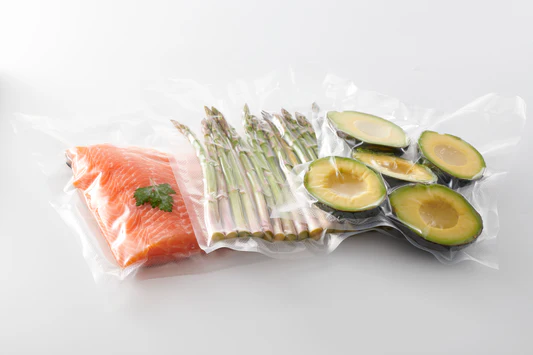Preserved lexicons
Small lexicon to master the cook's vocabulary like a chef.
-
Appetite
“Process that allows food storage in watertight packaging for a long period without special conditions (especially temperature) after having subjected them to heat treatment. »»
-
Jumper
“Contriber with screw capsule in which the jam is kept. »»
-
Skim
"Remove the white foam that forms on the surface when cooking a preparation. »»
-
SKIMMER
"Accessory that allows you to skim. »»
-
MARINADE
“Preparation in which a meat or fish are macerated. Based on wine, vinegar, spices ... "
-
Wad
"Half of an apricot or a pitted fishing. »»
-
PASTEURIZATION
"Process by which a food is heated to a defined temperature (between 70 ° C and 85 ° C to heart) for a defined time before being cooled quickly. Pasteurized foods should be kept in the fridge (3 to 4 ° C). »»
-
Jam pot
"Contriber without capsule in which we keep the jam and which we close with paraffin and/or a square of cellophane. »»
-
UHT process
"Used for milk treatment, heat can reach up to 150 ° C to destroy all microorganisms. We then speak of sterilization. This method changes taste qualities by distorting proteins because of heat. »»
-
BRINE
"Mixture of water and salt used to keep food. »»
-
STERILIZATION
"Technique intended to eliminate any microbial germ from a preparation. Foods are heated to 121 ° C at heart. »»
-
THERMAL TREATMENT
“Action to submit to heat preparations in jars or terrines. »»
-
ACIDIFICATION
“Process that increases the acidity of a food to improve conservation, by making the environment less favorable to bacteria. »»
-
Whitening
“Quick cooking method which consists in diving food into boiling water for a few minutes, then cooling them quickly. This helps preserve their color, texture and nutrients, while eliminating impurities before putting. Whitening also makes it possible to lower the acidity of a food, which can which can promote jar fermentation. »»
-
Lacto-fermentation
“Food preservation method that involves macerating them without the presence of oxygen. This process promotes the development of lactic bacteria, microorganisms beneficial for health. »»
-
EXPANSION
“Cooking technique where the food is immersed in a cold liquid or heated to a temperature below that necessary to coagulate the proteins. This process promotes exchange between food and cooking fluid. »»
-
PH
"The food pH measures the acidity or alkalinity of a food on a scale from 0 to 14. A pH less than 7 is acid, 7 is neutral, and greater than 7 is alkaline. It influences the flavor and preservation of food, as well as the growth of bacteria. »»
-
FERMENTATION
“Fermentation is a natural process where microorganisms, such as bacteria or yeasts, transform sugars into acids, gas or alcohol. This process is used to keep food and develop unique flavors, as in the case of yogurt, bread or sauerkraut. »»
-
CANNING
“Conservation method which implies tightly sealing foods in glass jars by heating them to destroy the microorganisms responsible for deterioration. »»
-
Food storage
"Procedure by which food is treated and manipulated in order to stop or slow down their deterioration. »»
-
Irradiation
“Food irradiation is to expose foods to ionizing radiation to reduce the number of microorganisms they contain. »»
-
SEAL
“Rubber ring ensuring the tightness of the jar. »»
-
Bain-marie
"Cooking technique which consists in cooking gently and gradually foods arranged in a container placed above a second container filled with boiling water. »»
-
Gradual cooling
"Process by which the air pressure inside an enclosed space, like a jar, decreases quickly. This can happen in a controlled or accidental manner and is important to guarantee the safety of canned food. »»
-
MATURATION
“Maturation is a process allowing a food to modify its qualities of digestibility and taste by aging. »»
-
MACERATION
“Food operation which consists in leaving a food in a liquid to permeate it with flavor. »»
-
PICKLES
“Pickles are vegetables or fruit preserved in a marinade of vinegar and spices. This conservation process gives them a tangy taste and allows them to be kept for a long time. »»
-
Head space
“Empty left at the top of the jar to allow food dilation during sterilization. »»
-
Jugagement
"Jugage is a phenomenon that occurs when the liquid
Food dates back to the surface of a jar during sterilization. This can happen if the jar is too full or if the food contains a lot of juice. Jugage can affect the tightness of the jar and the quality of the conservation. »» -
Vacuum
“Vacuum is a food preservation technique which consists in removing the air from a jar to create an oxygen -free environment. This helps preserve the freshness of food, slow down the growth of bacteria and extend their storage time. »»
-
Dehydration
"Food dehydration is a conservation process
which consists in removing water from food. This technique prevents the mold from developing, and keeping fruits, vegetables, or other preparations much longer. »» -
Sustaining
"Acid bacterial fermentation which can intervene in the
Bocal if food is not laundered before. A whitish deposit forms on the bottom of the pot » -
MOUNT
“The frame designates the base or the support on which a dish is presented or assembled, serving as a base for other ingredients. »»
-
CAPSULE
“Small airtight container which contains a substance, often used for food supplements, allowing easy ingestion. »»
-
LID
“Part used to close or cover a container, protecting its content and preventing leaks or contamination. »»
-
Drummer
“Contriber designed to contain water or other liquids, allowing animals to hydrate. »»
-
Weld band
“Band present on vacuum machines to seal the adapted bags or rolls. »»



